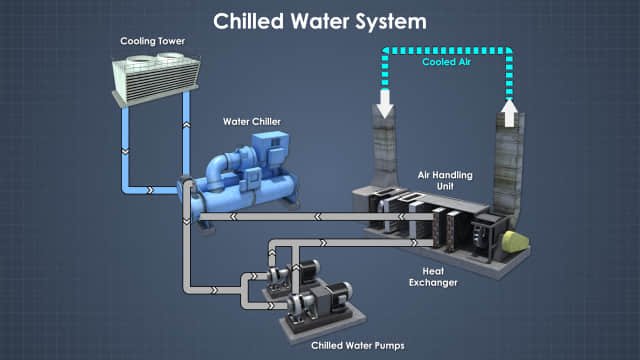Did you know that looping your air system can save your plant energy in the long run? It’s a not-so-well-kept secret in the industry. Many customers often report not having enough air pressure at the tail end of their system, typically referred to as a “dead end”. A quick fix for this issue is to “loop” the air lines, allowing air flow to run in different directions.
The Problem of Dead Ends
Let’s take a more specific example. Suppose you have 300 feet of 3/4-inch air line (which is not looped) with eight, 90-degree elbows (each elbow is considered 25′ of pipe), ending with a total of 500 feet. The pressure drop from the compressor room to the end of that line could be as high as 7.69 pound-force per square inch, or PSI, for every 100′ of pipe, a total of 38.45 PSI to the furthest point. In many cases, customers would call and say they have a capacity problem. In reality, it could be a distribution problem.
The Solution: Looping
A fix for this issue would be to increase the pipe size to 1-1/2″ pipe or 2″, or to “loop” the air system. This allows the air to flow in any direction and reach the path of least resistance. With the example used above, once air can flow in both directions our pressure drop is calculated on 250′ vs. 500′ — roughly half of what it was before.
Recommended Piping
We recommend Aluminum air pipe or Type-L Copper for all air installations. Aluminum is another popular choice for air lines. Installing aluminum air lines is quick and easy, especially with the fittings they have designed. It is like installing Legos with an adjustable wrench and cutting tool.
Conclusion
Looping your air system can significantly reduce problems related to pressure drop and energy consumption. It’s a simple solution that can make a big difference in the efficiency of your air compressor system.
FAQs
Q1: What is the benefit of looping an air system?
A: Looping an air system can reduce pressure drop and energy consumption, improving the efficiency of the air compressor system.
Q2: What is a “dead end” in an air system?
A: A “dead end” in an air system refers to the end of an air line where the pressure is often lower due to the distance from the compressor.
Q3: What types of piping are recommended for air installations?
A: Aluminum air pipe or Type-L Copper are recommended for all air installations due to their ease of installation and performance.
Q4: How does looping affect the pressure drop in an air system?
A: Looping allows air to flow in any direction and reach the path of least resistance, effectively reducing the pressure drop in the system.
Q5: What are some solutions to a capacity problem in an air system?
A: Increasing the pipe size or looping the air system can help address capacity problems in an air system.

